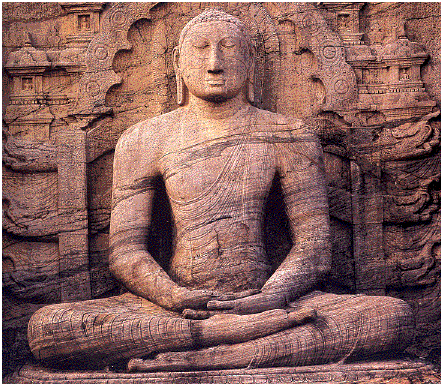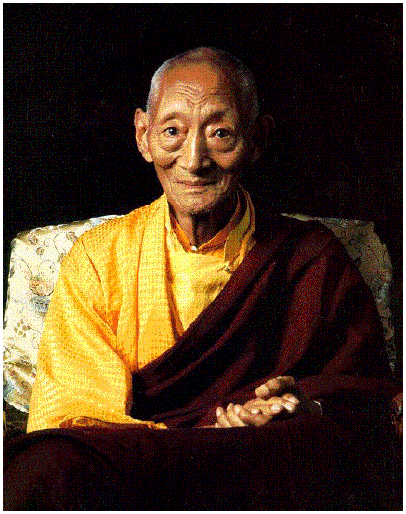Tibetan
Buddhism
H. E. Kalu Rinpoche
(Snow Lion)

- The realm of hell;
- The realm of pretas (hungry ghosts);
- The realm of animals (you do not want to be reborn as a doggie or a kitty-cat, much less as a yak).
- Being reborn as a god or a demi-god (sounds like fun --- but it is dangerously filled with pleasure and nothing else). In human rebirths you also have the possibility of
- Being born in a place with no appropriate spiritual teachings available (Jersey City, Tulsa or Bend, Oregon, or anyplace in Texas);
- Being born as a person who has no respect for religious practice (like American Fundamentalists);
- Being born in an era where there are no Buddhas;
- Being born in an impaired state where one cannot understand the teachings of the masters.
There are as well the Fourteen Root Downfalls, and "the Four Injunctions for someone who has taken the bodhisattva vow,
- known as the four negative dharmas, the four negative actions ... the eighteen further root downfalls of the Mahjayana and one tradition adds another forty-six precepts.
For those of us who flunked eleventh grade solid geometry (three times) all these numbers can be quite a strain.
 Fortunately, there is some merriment sprinkled around in Rinpoche's philosophy. Among the seven attributes of the universal monarch, there are the "eight offering goddesses who offer different sensory pleasures and aspects of sensory experience."
Fortunately, there is some merriment sprinkled around in Rinpoche's philosophy. Among the seven attributes of the universal monarch, there are the "eight offering goddesses who offer different sensory pleasures and aspects of sensory experience."
- The first is the goddess of gaiety and laughter; the second is the goddess of flower garlands; the third is the goddess of song; and the fourth is the goddess of dance.
And in the recitation of the hundred-syllable mantra, we find
- SU TSA ME TSI TANG SHI RI YA KU RUNG HUNG HA HA HA HA HO BAN GA WEN SAR WA TA TA GA TA BEDSRA MA ME MUN
"Ha ha," "ho ban," and "ta ta." Let Binny Hinn compete with that.
Rinpoche wants us to contemplate the "tantra" even in simple acts of lighting a spirit lamp to make tea, or in eating, where "a dedication of merit and virtue occurs at the end of the meal."
- There is even a technique in the Vajrayana carried out in the act of urinating.... We meditate that the flow of urine from our body is a flow of nectar. The nectar is that of awareness being shared with the pretas and other beings that are not fortunate enough to have direct contact with the teachings.
